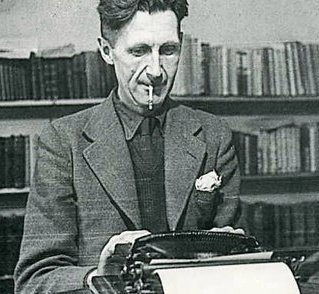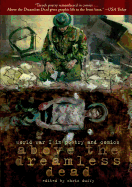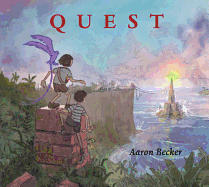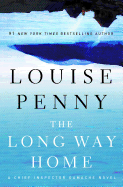Tuesday, August 26, 2014
Like many people, I was both "appalled and wryly amused" by Amazon's recent misunderstanding, misquote and mis-invocation of George Orwell in its ongoing battle with Hachette. While it may just be coincidence that Orwell was name-dropped in the middle of a confrontation between an online retail giant and a publisher, it is also appropriate, given that he often wrote about his relationship to books and the book business.  In his essay "Books vs. Cigarettes," Orwell observes that "reading is one of the cheaper recreations.... And if our book consumption remains as low as it has been, at least let us admit that it is because reading is a less exciting pastime than going to the dogs, the pictures or the pub, and not because books, whether bought or borrowed, are too expensive."
In his essay "Books vs. Cigarettes," Orwell observes that "reading is one of the cheaper recreations.... And if our book consumption remains as low as it has been, at least let us admit that it is because reading is a less exciting pastime than going to the dogs, the pictures or the pub, and not because books, whether bought or borrowed, are too expensive."
As a former bookseller, I've long been intrigued by Orwell's brief experience in the profession, the fruits of which crop up in his work. I love the Orwellian bookseller, though I'd never hire one in my bookstore. Like dyspeptic Gordon Comstock in Keep the Aspidistra Flying, who contemplates his dismal fate amongst the stacks at Mr. McKechnie's bookshop, where the "small dark room, smelling of dust and decayed paper, that gave on the office, was filled to the brim with books, mostly aged and unsaleable. On the top shelves near the ceiling the quarto volumes of extinct encyclopedias slumbered on their sides in piles like the tiered coffins in common graves."
Orwell recalls his own time as an Orwellian bookseller in the essay "Bookshop Memories" with irresistible sarcasm: "Many of the people who came to us were of the kind who would be a nuisance anywhere but have special opportunities in a bookshop."
Still, he did call bookselling "a humane trade which is not capable of being vulgarized beyond a certain point. The combines can never squeeze the small independent bookseller out of existence as they have squeezed the grocer and the milkman." --Robert Gray, contributing editor
(This is a condensed version of a longer column that appeared in Shelf Awareness Pro.)
The Blue Box
by Ron Carlson
Ron Carlson (Return to Oakpine), a grandmaster of American storytelling, has produced something new and exciting with The Blue Box. It's a collection of short short stories, some no longer than a page, most unlike anything Carlson has done before. They are whimsical and bizarre, starting and ending in odd places and rife with subtle touches of fantasy that wouldn't be out of place in a work of magical realism.
Carlson is usually known for his generous and compassionate view of humanity, his ability to capture the depths of a relationship with sharp dialogue and skillful scene setting. While those traits are evident here, this collection shows his playful side. Carlson has spent a lot of time in academia (he's currently the director of the fiction program at the University of California, Irvine) and that world falls under special scrutiny and lampooning in this collection. "In My True Style Guide," Carlson mocks both students and instructors with witty and weird suggestions on how to interpret teachers' grading comments.
One of the longer, more traditionally structured stories in the collection, "Teenagers Are Going Overnight to the Island Without Supervision," has a sense of mystery and menace that wouldn't be out of place in a slasher film. Many of the pieces are just dialogue, two people observed mid-conversation, mid-life, for a page or two. That Carlson can still manage formidable epiphanies and astute commentary on modern living in such compact space bears testament to his skills.
The Blue Box is undeniably fun, with stories that range far afield in subject and presentation; it's a slim, quick read with pleasures that outweigh its brevity. --Donald Powell, freelance writer
Discover: A charming, surreal collection of "flash fiction" from an established master of the short form.
Fives and Twenty-Fives
by Michael Pitre
When a road repair convoy stops to check for roadside bombs, their first duty is to scan five meters in all directions from within the vehicle. A bomb inside this perimeter can penetrate the vehicle's armor and kill everyone inside. Once five meters are cleared, scouts step outside and sweep an area 25 yards in every direction, before the convoy can move forward. These are the defining dimensions of a road repair platoon's daily work. Filling potholes in Iraq means clearing bombs.
Michael Pitre's debut novel, Fives and Twenty-Fives, follows three men from a road repair platoon in Iraq through their lives after their service has ended, alternating among their first-person voices. In disjointed chronology, the story switches between the present, when each man has either returned home or tried to create a new one, and their far more vivid past, in the Iraqi war zone.
Lieutenant Donovan is the platoon's leader, although he knows he relies overmuch on his highly competent sergeant and corporal. Both his rank and his natural reserve inhibit Donovan's relationships with the men and women assigned to him. "A real southern college boy, the Lieutenant. Like he was on his way to an outdoor jam band festival one day, took a wrong turn, and somehow ended up in the Marines." Corpsman Lester "Doc" Pleasant is from the wrong side of the tracks, but discovers a gift for medical work. The platoon's losses, which he is meant to prevent, hit him hard. Their "terp," or local-native interpreter, is a Baghdadi university student code-named Dodge ("a dependable car"), who carries a copy of The Adventures of Huckleberry Finn in his back pocket, filled with copious marginalia in both Arabic and English. He is assigned to Donovan's platoon but not allowed to talk with the Americans about his past--not that he wants to. In the aftermath of their war, the reader watches these three men try to navigate a world that no longer makes sense to them or of them.
In a post-Katrina New Orleans (and vomit-soaked French Quarter) as stark as the wartime Iraqi desert, Donovan goes back to school to pursue a business degree, but his professors don't feel that officer training should exempt him from coursework in "leadership dynamics and business ethics." He struggles to find relevance in school and work, and is haunted by the fates of the men and women of his platoon. Doc returns home to Houma, Louisiana, his military service having failed to offer the opportunity he sought. He can't stop worrying about his father working out in the shed late at night, and still carries his trauma bag everywhere he goes. Dodge is lost to his American friends, his postwar experience known only to the reader.
In flashbacks, the reader witnesses these men and others in their day-to-day work in Iraq: repairing potholes, each and every one of which reliably contains an IED; trying to keep the roads safe for military and civilian travel; balancing humanity against the ugly work of war; and riding out the senselessness of military politics. Relationships grow and fade. Their homes seem very far away, and are rarely mentioned. One exception is Donovan's phone call to his parents on his birthday, an effort that costs him dearly. Additional members of the platoon are revealed only in these flashbacks. The strong characters of Corporal Zahn and uber-capable Sergeant Gomez, for example, don't get first-person treatment; the reader has to work a little harder to puzzle out the endings to their stories, with an increasing sense of foreboding.
Meanwhile, in the present-tense sections, Donovan struggles with the social interactions required by work, school and the possibility of dating. He is hailed as a military hero but holds himself responsible for a range of less salutary personal postwar outcomes. Doc is back at the oil-change place where he worked in high school, his society consisting of a father he can hardly speak to and two friends in a band in New Orleans. Dodge inhabits a precarious position in Tunisia, a society teetering at the brink of violent protests and social upheaval; his pleas to come to the United States have been denied.
These young people come home from a deeply traumatic foreign war to a society totally unprepared to understand them. When Doc ventures out with a girl to see the fireworks on New Year's Eve, he reacts badly to the sounds of explosions and lashes out, wanting to protect those around him; but his companions, who barely know him, judge him to be unstable. Donovan carefully avoids playing the part of the "stereotypical brooding vet." The experiences of Donovan, Doc and Dodge are heartwrenching in both theaters; it is Pitre's greatest feat that they remain viscerally real people, not black-and-white cut-outs. From the perspective of his characters, there are perhaps no heroes here.
The quiet pathos of war, its aftermath and the individuals affected by it, and the inability of a tone-deaf society to relate to them, is rendered with poignancy and stark honesty in Fives and Twenty-Fives. Readers will be floored by Pitre's spare literary style, the authenticity of each of his characters' three different voices, and those mesmerizing characters themselves, who are not perfect but demand our compassion for their very reality. The story of Fives and Twenty-Fives is sometimes difficult to abide, but is also necessary; we are lucky to have such a fine voice as Pitre's to tell it. --Julia Jenkins
Mystery & Thriller
The Long Way Home
by Louise Penny
Armand Gamache, former Chief Inspector of Homicide for the Sûreté du Québec, has retired. Scarred (both emotionally and physically) by the past, Gamache is hoping for peaceful days with his wife, Reine-Marie, in the tiny village of Three Pines.
But Clara Morrow, close friend of the Gamaches, is agonizing over her missing husband, Peter. Clara and Peter had planned to meet again after a one-year separation to see if their marriage is worth saving, but Peter failed to show at their anniversary and Clara is disturbed. Peter's art career has been waning, and ever since Clara gained national acclaim for a recent series of portraits she painted, Peter has struggled with jealousy. Clara is reluctant to disturb the Gamaches' peace, but she has to know: Did Peter simply walk away from her? All of their friends are sure that Peter would have done just about anything for fame. How far has he gone?
Louise Penny (How the Light Gets In, The Beautiful Mystery) brings her trademark poetry and scintillating, but almost painful, characterization to bear in The Long Way Home. Gamache, with his sharp mind and bruised soul, and Clara, with her artist's gifts and clumsy social skills, lead a team of their friends into the desolate Canadian wilderness to find Peter and discover the truth about the last year. Provoking meditations on the nature of art, inspiration and loss, The Long Way Home is a slow-paced paean to the power of an artist's muse and the danger of an envious spirit. --Jessica Howard, blogger at Quirky Bookworm
Discover: The hunt for a missing artist leads to an introspective quest across the Canadian wilderness.
Keep Your Friends Close
by Paula Daly
Natasha Wainwright's life seems ideal. After 16 years of marriage, she and her husband, Sean, have two beautiful daughters and a hotel in a Lake District resort town. She knows that not everything is perfect--running their business can be stressful and doesn't leave her much time to nurture her marriage--but Natty feels confident that she and Sean share a rock-solid love, and she welcomes the distraction of a visit from her best friend, Eve.
When one of Natty's daughters suffers a medical emergency while studying abroad, Natty promptly rushes to her side for a few days and returns to find that Eve's promise to help out back home translated to having an affair with Sean, who claims to be in love with Eve. The nightmare only gets worse as Eve begins to show her true manipulative colors and Natty makes a rage-driven mistake that could land her in jail. She can't give up on her family, though, especially after she finds an anonymous letter claiming that her family isn't the first to fall prey to Eve's treachery. As she delves into Eve's past looking for a way to exorcise her from their lives, Natty slowly realizes that she and her family are in grave danger.
Though several aspects of Keep Your Friends Close, the plot-driven sophomore novel from Paula Daly (Just What Kind of Mother Are You?), may strike some readers as a bit antifeminist, the story taps into the frightening notion that security is an illusion. This nail-biter will leave readers breathless and wondering how well they know their friends. --Jaclyn Fulwood, blogger at Infinite Reads
Discover: A taut thriller about a woman whose life and family are stolen by her closest friend.
Romance
The Best Kind of Trouble
by Lauren Dane
With this steamy romp, Lauren Dane (Count on Me) introduces a new series featuring a gorgeous band of brothers.
Back in their hard-partying younger days, Natalie Clayton and Patrick Hurley shared a two-week fling spicy enough to make a jalapeño pepper jealous, then went their separate ways--she to college, he on tour in his brothers' rock band.
Years later, Natalie has put her wilder ways behind her. The daughter of an addict, she had a dark, frightening childhood that left her with the desire to always call her own shots. Now a librarian in the sleepy little town of Hood River, she's built a life she can control. When she runs into Paddy at a local coffee shop, Natalie is determined to resist the attraction they still share. Now a famous rock star, Paddy comes with his share of chaos and baggage, which makes him the last man Natalie should want. Unfortunately, he's the only one she does want.
Paddy knows running into Natalie again is fate. Despite her suspicious nature, he eventually gets her back into his life and bed, but convincing her that he's settled down isn't easy. When Natalie's druggie father resurfaces and awakens all her anxieties, the lovers must grow together or fall apart.
Dane keeps her rock-star plot believable with all the relationship complications that come with fame. Her frequent and scorching love scenes are tailor-made for readers who like red-hot romance. Well-developed secondary characters will leave readers eager for the next installment. --Jaclyn Fulwood, blogger at Infinite Reads
Discover: The explosive reunion of two lovers--a librarian and a rock star--whose passion immediately reignites.
Graphic Books
Above the Dreamless Dead: World War I in Poetry and Comic
by Chris Duffy, editor
In Above the Dreamless Dead, Fairy Tale Comics editor Chris Duffy brings together an international cast of award-winning artists to provide their interpretations of "trench poetry," the literary blossoming that documented life at the front during the Great War. The title derives from the last line of Wilfrid Wilson Gibson's "The Dancer," and the volume includes the works of Gibson, Wilfred Owen, Siegfried Sassoon, Robert Graves, Thomas Hardy and many more.
The collection is divided into three sections: "Call to War," "In the Trenches" and "Aftermath." Artist Sammy Harkham portrays Francis Edward Ledwidge's "War" with images of idyll unfolding into a barren wasteland of empty rooms and decaying corpses, all told from the viewpoint of a wandering dog. The lyricism and grace of Wilfred Owen receives a touching tribute from George Pratt (winner of the Eisner Award for Enemy Ace: War Idyll), who uses black-and-white acrylics to evoke fear, despair and desolation in "Greater Love" and "Dulce et Decorum est." For Owen's "The End," Danica Novgorodoff gives a minimalist spin to the final quietness of death after the long and thunderous rush of battle.
The illustrations rendered by these artists are stark and powerful, transforming the poets' words into a moving reel of emotions that relay the horror, sadness and loss from a period of history that is sometimes neglected. "In drawing comics from [these poets], the contributors are doing what we all do when faced with the words of soldiers: bearing witness to those who bear witness," writes Duffy in the introduction. "It is the least we can do." --Nancy Powell, freelance writer and technical consultant
Discover: On the centennial of the beginning of World War I, a powerful interpretation of trench poetry by some of the greatest cartoonists working today.
Kill My Mother
by Jules Feiffer
Pulitzer Prize- and Academy Award-winning cartoonist Jules Feiffer's Kill My Mother is a moving tribute to film noir, the golden age of Hollywood and World War II combat. Annie and her mother (who is employed by a private eye and is twice the detective he is) try to solve the mystery of who killed Annie’s policeman father, which serves as a launching point for a plot that has more twists than a roller coaster. Stuffed with the spicy ingredients of classic noir--femme fatales, gunplay, drunken private eyes, seedy bars and muddy back alleys--the graphic novel simmers with moody atmosphere as Feiffer tracks his characters from the Depression through the end of World War II. Whether boxing, stumbling drunk, making love or trying to kill each other, the characters move with a grace that extends beyond the traditional borders of a panel comic; Feiffer's penciling lends a human delicacy and vulnerability to even the most brutal action and adds poignancy and a sense of real loss and peril to events. The script is tight and evocative, filled with the snappy patter and seedy patois of classic detective novels.
Kill My Mother is as epic and complex as a James M. Cain novel, not to mention as dark; the body count keeps rising and no character is safe. The octogenarian's almost feminist empowerment of women prevents the story from becoming mere trite tribute. Feiffer has taken his fervor for noir and skillfully rendered it onto the page; the result stands worthily beside its influences, but is as fresh and new as anything the comic industry is currently producing. --Donald Powell, freelance writer
Discover: A noir graphic novel by influential cartoonist and screenwriter Jules Feiffer.
Food & Wine
The Messy Baker: More Than 75 Delicious Recipes from a Real Kitchen
by Charmian Christie
Step aside, froufrou cookbooks showcasing delicately balanced layer cakes, uniform cookies and perfect piecrusts. Make way for Charmian Christie, the Messy Baker (of food blog messybaker.com), and her advice: relax! Her philosophy is clear in the table of contents; chapters include adjectives such as crumbly, sloppy, smudgy, gritty and drippy. Let the culinary fun begin!
Lest the home baker think "messy" equates to "careless," Christie clarifies her guidelines, directing her readers to "always wear an apron, be patient, set out the ingredients before you start" and more. She demystifies common ingredients--the four main flour types a baker will encounter and vanilla in its various iterations, for example.
Armed with basic knowledge and Christie's conversational intros to each recipe, bakers will tackle impressive recipes. Her brownies are Deep Dark Cherry and Chipotle; her cookies Double-Stuff Über Oreo. But there's more here than just sweet pastries. The 75 recipes include plenty of savory fare, too. "Smudgy" entries ("food that makes you wipe your face") include chicken-and-honey pizza, and a "Gritty" offering is Christie's version of centuries-old Middle-Eastern lavash bread.
As appealing as the mouthwatering recipes are, the friendly tips on almost every page are the real gems, such as the observation that Florentines don't keep, so "guess you have to eat them right away. Shucks." Close-up photos of in-progress or finished recipes will boost a reader's enthusiasm, while some provide a homey touch: wooden spoons all in a row, a beautiful cat looking on from the kitchen windowsill. Welcome to the Messy Baker's world! --Cheryl Krocker McKeon, manager, Book Passage, San Francisco
Discover: A recipe collection designed for stress-free baking and delicious results from a popular food blogger.
Summer Food: New Summer Classics
by Paul Lowe; photographs by Nina Dreyer Hensley and Jim Hensley
Cookbook or coffee-table book? Summer Food is both: a collection of simple, party-worthy recipes and a beautiful book of food art, with full-page color photographs. Bound in an embossed cover (no dust jacket) and printed on heavy stock that feels as sumptuous as the recipes, this is the perfect hostess gift--or present for yourself.
Originally published in Norway, Summer Food from Paul Lowe (of Sweet Paul quarterly magazine) and his co-creators, Nina Dreyer Hensley and Jim Hensley, was photographed entirely outside. Seasonal foods prepared with Scandinavian simplicity glow with the suggestion of endless blue skies. Smoked salmon, fresh herbs, grilled corn, heirloom tomatoes shout "summer!" and translate into any language. While the recipes are an homage to Lowe's heritage, the ingredients are as easy to acquire in Ohio as they are in Oslo.
This beautiful collection is straightforward and accessible, divided into chapters for the three main meals plus drinks and desserts. Many recipes have only four or five ingredients, and all include a photo and brief conversational tip. The beverage recipes epitomize the author's commitment to fresh and seasonal: every drink centers around a fruit or vegetable, including apricot-and-rosemary mimosas, and the Green Giant (veggies plus vodka).
Little personal essays interspersed throughout (The Day the Juicer Exploded; memories from his measles-recovery celebration in "Paul's Fever Party") suggest that if this nice fellow can serve fresh, seasonal dishes from breakfast through cocktails and make it look easy, so can we. --Cheryl Krocker McKeon, manager, Book Passage, San Francisco
Discover: Scandinavian recipes with fresh, seasonal ingredients fit for relaxing summer dining.
Health & Medicine
Doctored: The Disillusionment of an American Physician
by Sandeep Jauhar
In his 2007 memoir, Intern, Sandeep Jauhar recounted two years of a grueling internal-medicine residency. Doctored, which continues his story through his first five years of practice as a cardiologist at a large teaching hospital, shares with its predecessor its author's gift for precise, observant writing, and it offers an unsettling portrait of the state of American medicine today.
Eight years after graduating, Jauhar joined the staff of Long Island Jewish Medical Center as a cardiologist specializing in congestive heart failure, the treatment of which is a $40-billion annual business. Almost from the beginning, he was beset by relentless financial pressure, as he struggled to support his wife and newborn son in New York City on his hospital salary. Most of his angst was the product of a system whose financial incentives pit hospitals and physicians against each other and frequently run counter to what he considers optimal patient care.
Doctored features many vivid accounts of Jauhar's encounters with patients and colleagues, illustrating the high-stakes ethical and professional decisions physicians face daily. These stories, often deeply personal, bring a human dimension to his sharp critique of a "system that makes us bad, makes us make mistakes." The "us" is key: Jauhar is as unsparing in judging his own conduct as he is that of his profession as a whole.
It will take much more than this book to cure the critically ill American health-care system, but we can thank its author for starting the conversation that may help speed a recovery. --Harvey Freedenberg, attorney and freelance reviewer
Discover: A cardiologist's memoir that serves as an often-blistering indictment of the American health-care system.
Children's & Young Adult
Quest
by Aaron Becker
This triumphant wordless picture book reunites the girl with the red crayon, the boy with the purple crayon and the majestic purple bird from Aaron Becker's debut, Journey (a 2014 Caldecott Honor book).
As the two children take refuge from a rainstorm under a stone bridge in a city park, a king emerges from a set of double doors and thrusts a document into the boy's hands. The monarch, seized by soldiers and pulled back through the doorway, tosses an orange crayon that matches his crown and robe. The girl fetches the crayon and places it in her toolbelt. Girl and boy each draw a key that unlocks one of the double doors, and their adventure begins. Becker draws readers back into the world of Journey, where the king is held captive on a giant boat. The young heroes examine the king's document: a map with a half-dozen landmarks connected by a rainbow of different colors, foreshadowing the scavenger hunt to follow. For their first destination, an underwater ruin, the boy draws a purple squid (on which they hitch a ride), and the girl sketches red fins and oxygen tanks (one for the bird, too). A turn of the page reveals an Atlantis-like city glowing in golden light. Each destination yields another crayon color, as they narrowly escape the king's oppressors.
Becker's smaller vignettes quicken the pace, while his full-spread images reward close attention. In the final harrowing escape, the purple bird plays a key role and lights up the sky. Fans will eagerly anticipate the final installment. --Jennifer M. Brown, children's editor, Shelf Awareness
Discover: The girl and boy who met in Journey join forces in this edge-of-the-seat wordless adventure.
365 Days of Wonder: Mr Browne's Book of Precepts
by R.J. Palacio
Fans of Auggie Pullman's story in Wonder will remember his fifth-grade English teacher, Mr. Browne, and the memorable precepts he imparted as he encouraged his students to write. Here he shares wonderful "words to live by" as a thought for each day, all year long, with an essay to introduce each month's bounty.
Mr. Browne opens with the story of how he began to collecting precepts. In college, he discovered a 17th-century man-of-all-trades with the same name, Sir Thomas Browne, who wrote: "We carry within us the wonders we seek around us" (this also doubles as the January 1 entry). Browne placed this quote above his desk and carried it in his wallet as he traveled with the Peace Corps, and his wife framed it as a wedding gift when they married. Mr. Browne passes on his passion to his students in Wonder and again in these pages. From age-old adages to smart sayings from students (Palacio selected 365 of 1,200 precepts submitted by children all over the world), Mr. Browne's collection will get students thinking. His opening essays often use personal anecdotes by way of instruction, such as the story (for April) of his three-year-old son's resistance to vegetables (the doctor tells him, "He can't eat them if they're not even on his plate"). The February essay takes on an uncharacteristically teacherly tone that's less effective, but this book, overall, will be welcomed by Wonder fans and attract new ones.
This collection of inspirations would also make an ideal gift for homeroom teachers (and English teachers, of course). --Jennifer M. Brown, children's editor, Shelf Awareness
Discover: Mr. Browne's collection of inspiring "words to live by," one for each day of the year.














